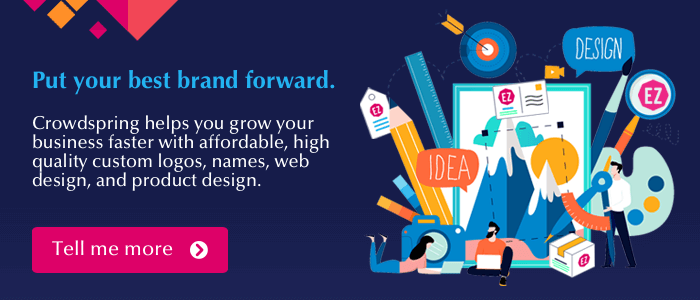

Consumer behavior has changed dramatically in the last few years.
People have become empowered, more impatient, and more demanding. They expect a seamless experience every time. And they expect everything instantly: same delivery day via Amazon Prime, food at your doorstep in 10 minutes or less, or romance in a couple of swipes.
As a result, businesses have had to adjust and evolve their marketing strategies. It’s no longer enough to rely only on search engine optimization (SEO), have a presence on the latest social media network, or have a business website.
The most successful companies strive to engage their customers and prospects creatively. And although engagement has always been meaningful, it’s the linchpin of a modern marketing strategy.
That’s because business growth is accelerated faster when marketing strategies are anchored in core human behaviors. Knowing how people make purchasing decisions helps marketers, and smart business owners cut through the clutter of a congested and fragmented marketplace.
With principles that tap into core human behavior, gamification is the newest tool to bridge the gap between businesses and their customers.
What is gamification?
Gamification involves adding game design elements and mechanics to non-game environments like websites, online communities, etc., encouraging people to take specific actions. Gamification incentivizes people to engage, collaborate, share, interact, and accelerate business growth.

The psychology behind gamification
Gaming is embedded in human psychology as a core behavior.
When we experience positive reinforcement, like rewards or praise, we are more likely to repeat behaviors that led to the positive reinforcement.
For example, when we get an unexpected discount on an item, our brains release dopamine, a neurotransmitter. Dopamine creates sensations of pleasure, motivation, addiction, and lust.
When we feel pleasure, we are biologically wired to seek to repeat it.
On the other hand, if an experience causes discomfort, our brain will learn to avoid that situation or experience. So if you planned to purchase a television but discovered that it costs 10% more than advertised, you’ll be frustrated and upset and will, in the future, avoid the merchant that misled you about the price.
Ways to use gamification in your marketing strategy
If your marketing strategies can help people experience pleasure through gamification, you’ll build brand equity by helping people create positive associations with your brand.
Powerfully simple strategy for business growth

Our brand identity workbook has actionable insights and steps to help you build a strong brand identity.
We just emailed the brand identity workbook to you.
Simply put: gamification helps engage people and helps to keep them engaged longer.
This is important because the attention span of a human adult is 9 seconds. That short amount of time is insufficient to capture someone’s attention and to communicate meaningfully about a product or service.
That’s why some brands gamify their messaging. For example, a multiple-choice Instagram story post, a pop-up window with a “spin to win” game, or a subject line that alludes to an invitation to play, will help capture your audience’s attention.
By capturing attention better, you can increase:
- average website session time
- email open rates or click-through rates
- average time spent reading an email
- audience engagement
- social sharing
There are many different ways your business can use gamification when marketing. Here are several proven brand strategies that focus on gamification:
1. Contests and competitions
Humans love playing competitive games.
Having fun results in better satisfaction.
A person who has fun answering an online quiz or competing in a trivia game is more likely to recommend the experience to others. A customer excited about a “scratch to win” offer in your email is more likely to open the following email.
So, consider adding friendly and aspirational gamification elements to your advertisements or content.
You can ask audiences to submit tagged user-generated content (UGC) as part of your content marketing strategy. The UGC should prominently feature your product or branding.
For example, if you sell t-shirts, ask people to submit photos of them wearing your t-shirts. Pick the winner based on the number of likes each image gets. This can motivate your customers to recruit family and friends to engage with your content and, eventually, your product or service.
You can also start a challenge (many TikTok challenges become viral).
Challenges evoke a sense of community because people share their experiences or self-expression with a larger audience.
You can start creative dance challenges, song duets, or “pass-the-something” type of challenges, the digital version of the chain mail.
Trivia quizzes, wheel-spinning, roulettes, puzzles, memory games – whatever the test you set in front of your audience, it shouldn’t be too complicated. Create games that anyone can play and win. But, don’t make games too easy, or they will get boring fast.
The rules and conditions should be simple and easily understandable. A complicated challenge that takes too much time to complete could prompt people to leave.
And be sure that you reward people immediately when they win.
Rewards don’t have to be monetary. You can, for example, give badges that represent a level of achievement, leaderboards, and rankings.
And don’t forget the social aspect of gaming. Because humans are social beings, we love to share our experiences and achievements. Make it easy for people to share with others on social media.
2. Loyalty and rewards program for repeat customers
Introducing gamification to your buyer retention and referral program can make repurchasing fun.
There are various ways to introduce gamification to a loyalty program.
You can allow customers to rack up points or stars for spending and engaging with your brand. And let them “level up” once they earn a specific number of points or stars.
This motivates them to continue to buy from you. The more they buy, the more they will be rewarded.
You can also “unlock” features when customers take specific actions. For example, you can “upgrade” a customer to another level based on the actions you want them to take.
You can even use this in less of a direct sales-y way. For example, allowing a customer to create and personalize avatars is a great way to keep their eyes on a goal and motivate them to “stick” with your brand, service, or product so they can unlock a “skin” or a character.
3. Make customer service fun again – for your team
Gamification can also impact the other side of customer strategy: customer service.
You can also introduce gamification elements in your CSR (customer service representative) program. When a customer service agent is goal-orientated, they are more inspired to do better in pursuit of a goal. This makes them better and more focused on what they are doing. And it helps you create the best customer experience for customers and prospects.
In a recent survey, 89% of employees reported feeling more productive, while 88% felt happier at work due to gamification.
If you decide to include gamification in your customer service program, reward employees with good customer feedback.
Your customer service agents can gain and collect badges or points whenever they hit quotas or specific targets. You can make it a holistic exercise to reward everyone if the entire team can go a certain amount of time with high customer satisfaction.
4. Personalize and customize
Nearly every business must collect specific personal data from customers and prospects.
But most people are sensitive about sharing such data.
Gamification is a non-invasive way of asking people for the necessary personal information. People are more inclined to share their data when they get something in return, especially when they receive the reward instantly.
For example, by adding “diagnostic” quizzes at the start of a customer’s journey – profiling their style, preference, or personality – you can gather data that can curate and personalize product recommendations for your customers.
A business selling beauty products and cosmetics may give their customers quizzes to profile their skin tone, skin type, and lifestyle habits to suggest various products or product bundles.
Even a left or right swipe, similar to a dating app, can make product recommendations more fun.
The most effective way to reach and engage your target audience is to understand how to connect with them. You can build more effective marketing campaigns and make the customer journey a positive and rewarding social experience by leveraging gamification strategies that resonate with core human behavior.
